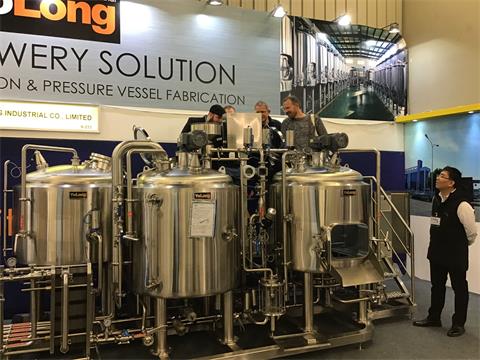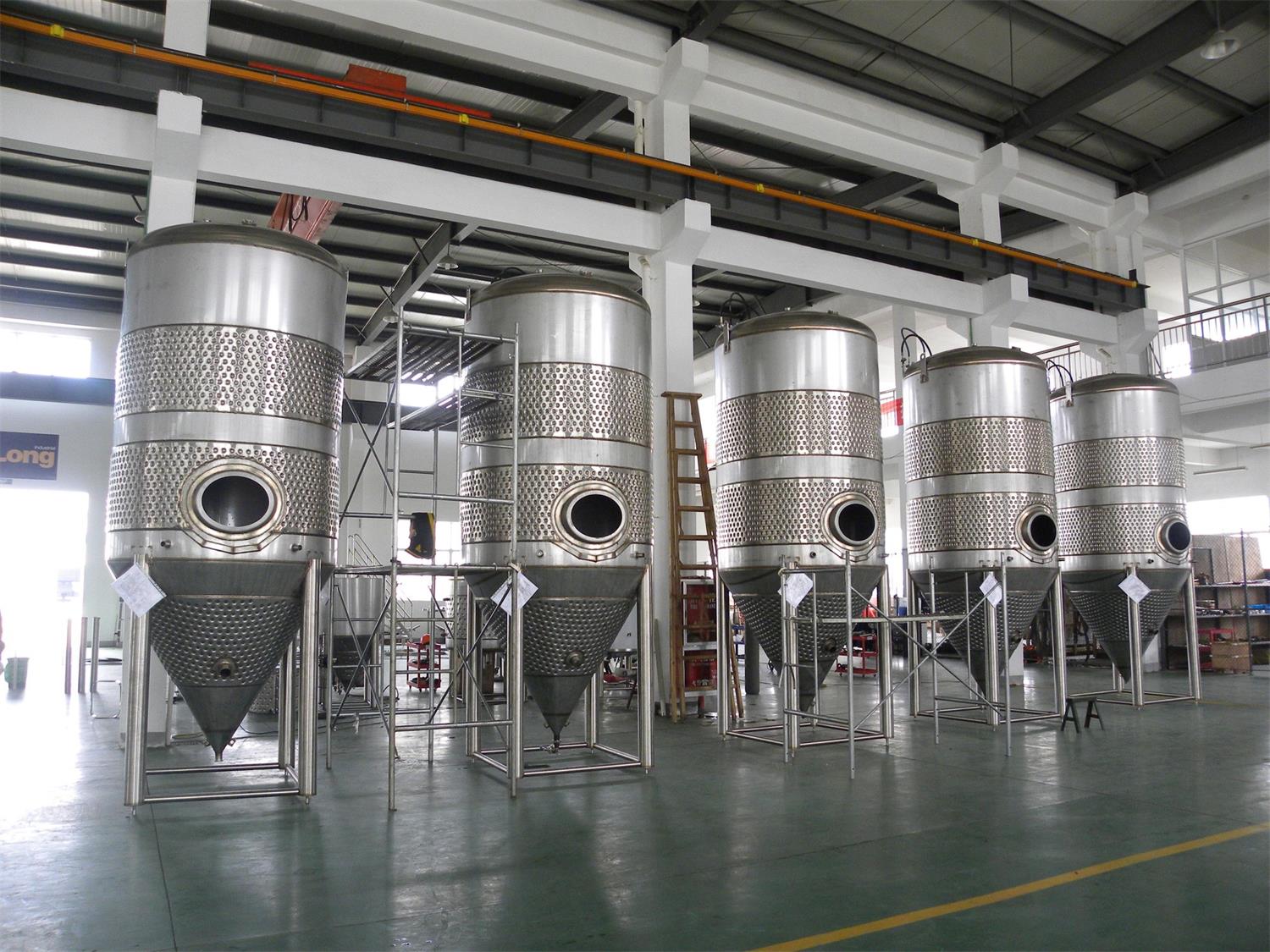Automated Beer Brewing Systems
Automated beer brewing systems allow for efficient, consistent, and high-volume beer production without constant manual oversight. These systems automate many aspects of the beer brewing process while still allowing for customization and quality control.
Benefits of automated systems include:
- Increased consistency and efficiency
- Ability to produce large volumes
- Reduce labor needed for monitoring
- Custom programming for recipes
Considerations when choosing an automated system:
- Batch size needs
- Degree of automation desired
- Available space
- Budget
Equipment Guide for automated beer brewing system
The main equipment in an automated brewing system includes:
| Equipment Type | Description |
|---|---|
| Mash tun | Mixes milled grains with water to extract sugars |
| Lauter tun | Separates sweet wort from spent grains |
| Brew kettle | Boils wort with hops for flavoring |
| Whirlpool | Settles hops and coagulated proteins |
| Fermentation tanks | Yeast converts sugars into alcohol |
| Brite tank | Carbonates and clarifies beer |
| Piping & pumps | Transfers liquids between vessels |
| Control panel | Controls temperatures, valves, pacing |

automated beer brewing system Process
The automated brewing process generally follows standard beer brewing steps, with control systems managing timing and conditions:
- Milling: Grains are mechanically crushed into grist
- Mashing: Grist mixed with hot water to convert starches to sugars
- Lautering: Wort separated from spent grains
- Boiling: Wort boiled with hops for flavor, aroma, preservation
- Cooling: Wort quickly cooled to ideal yeast temp
- Fermenting: Yeast converts sugars into CO2 and alcohol
- Maturing: Beer clarified and carbonated to finish
Automation allows precise control over each step’s temperature, duration, and conditions to ensure consistency. Specialty grains, hops, yeasts can customize flavors.
Automated System Capacity, Space Needs and Layout
Capacity & Space
| Brewing System Size | Batch Capacity | Space Required |
|---|---|---|
| Microbrewery | 1-15 BBL per batch | 800-1,500 sq ft |
| Pub brewery | 7-30 BBL per batch | 1,200-3,000 sq ft |
| Production brewery | 30+ BBL per batch | 3,000+ sq ft |
Layout Considerations:
- Workflow (mashing → lautering → boiling → fermenting → storage)
- Easy transfer between vessels
- Accessibility for cleaning/maintenance
- Room for storage (grains, hops, yeast), cold rooms, seating
- Expandability for increased production
Customization Options
Automated brewing systems offer numerous customization options:
Equipment
- Batch size
- Vessel construction material (stainless, alloy)
- Number of fermentation vessels
- Secondary processing (filtration, centrifuges)
Brewing Process
- Recipes & specialty ingredients
- Single, double, or triple infusions during mashing
- Fermentation temperature controls
- Lagering or aging duration
Control System
- Level of automation complexity
- Custom programming for unique recipes
- Data tracking features
- Remote monitoring capabilities
This flexibility lets brewers produce consistent specialty beers tailored to their tastes.
automated beer brewing system Suppliers and Price Considerations
Key Suppliers
| Supplier | Description | Avg Price Range |
|---|---|---|
| JVNW | Fully automated | $100K – $500K |
| Premier Stainless | Turnkey or custom | $200K – $1.5M |
| Specific Mechanical | Custom fabrication | $500K – $5M |
Price Factors:
- Batch production capacity
- Construction material (stainless steel costs more)
- Control system complexity and sensors
- Degree of customization
- Additional equipment needs
Larger turnkey systems tend to cost $100-$150 per annual barrel capacity. Full-service custom fabrication averages $200+ per annual barrel.
Installation, Operation and Maintenance
Installation
- Equipment positioned and piped properly for workflow
- Electrical, water and drains set up to codes
- Control system calibrated and programmed
Operation
- Staff trained on system programming
- Following standard brewing methods
- Adjusting recipes and processes as needed
- Monitoring fermentation progress
- Performing secondary processing and quality control
Maintenance
- Daily cleaning and sanitizing
- Regular equipment inspections
- Replacing worn parts (o-rings, seals, hoses, etc)
- Software updates or control calibration
Manufacturers provide instruction manuals and often on-site assistance during commissioning. Many offer ongoing technical support contracts as well. Proper maintenance keeps these systems running smoothly for years.
Choosing an Automated Brewing System Supplier
Considerations when selecting an automated brewing system supplier:
| Criteria | Details | Questions to Ask |
|---|---|---|
| Track record & experience | Years in business, number of systems installed, breweries served | How long have you offered automated brewing systems? How many have you built? Can I contact your customers? |
| Offerings match needs | Batch size abilities, budget restrictions, custom options | What batch capacities can you supply? What custom options are available? How flexible is the control system programming? |
| Construction quality | High-grade stainless steel holds up over time | What materials do you use in construction? How thick is the stainless steel? Which welds and finishes do you use? |
| responsive support | Availability for ongoing maintenance questions | Do you have full-time tech support on staff? What are your response time commitments? How quickly can you send a technician on-site if needed? |
| References & reputation | Satisfied customers indicate good performance | Can you provide customer references? What do reviews say about ease of use and reliability? |
Visiting installed systems firsthand and talking to current users provides the best evaluation. Prioritizing quality and support helps ensure smooth operations long-term.

Pros, Cons and Limitations
Pros
- Increased consistency and efficiency
- Automation reduces labor needs
- Customization provides flavor flexibility
- Can handle large production volumes
- Tighter quality control
Cons
- High upfront equipment costs
- Complex programming and controls
- Troubleshooting issues can be challenging
- May still need brewmaster oversight
Limitations
- Not feasible for smallest nano or pilot systems
- Require special installation (drainage, electric)
- Upper batch size limited by vessels and footprint
- Hop additions less flexible than full manual
While expensive initially, automated systems allow high yields while retaining uniqueness – making them ideal for larger craft breweries seeking to grow.
FAQ
Q: How much beer can these systems produce annually?
A: Production capacity depends on batch size and fermentation tank counts. A 7 BBL system with 3 fermenters can produce ~2,000 BBL per year. Larger systems with ongoing staggered batches can reach 10,000+ BBL annually.
Q: Can just one person operate an automated brewing system?
A: While the automation reduces labor compared to manual brewing, at least 1-2 trained staff are required to load grains, monitor fermentation, conduct transfers, clean vessels etc.
Q: Are automated brewing systems difficult to learn and control?
A: Most come with intuitive touchscreen interfaces for programming recipes and monitoring the brewing process. However, some training or experience with commercial brewing equipment is still beneficial. Many suppliers offer operator training packages.
Q: What size batches should I plan for in my brewhouse design?
A: Base batch production size on your annual volume goals and market demand flexibility needed. More fermenters allow overlapping staggered batches. Leave room to scale up batch sizes as production needs increase.
Share this entry
Interested in learning more about Brewing Systems including additional details and pricing information? Please use the form below to contact us!
YOLONG BREWERY EQUIPMENT FAQS
- Commercial Brewery / Craft Brewery / Microbrewery / Nanobrewery
- What is The Difference Between Craft Beer and Industrial Beer?
- The Bespoke Differences In Custom Brewing Systems
- Everything You Need to Know About Kettle Souring
- How to Choose Brewing Equipment for Your business?
- How To Choose The-Best Partner To Build Your Commercial Microbrewing System?
- Two Detection Sensors That You Need To Use In Your Brewhouse System
- Remote Control Applications in Brewing Equipment/How does it work?
- How To Clean Your Brand New Brewery Tanks?

